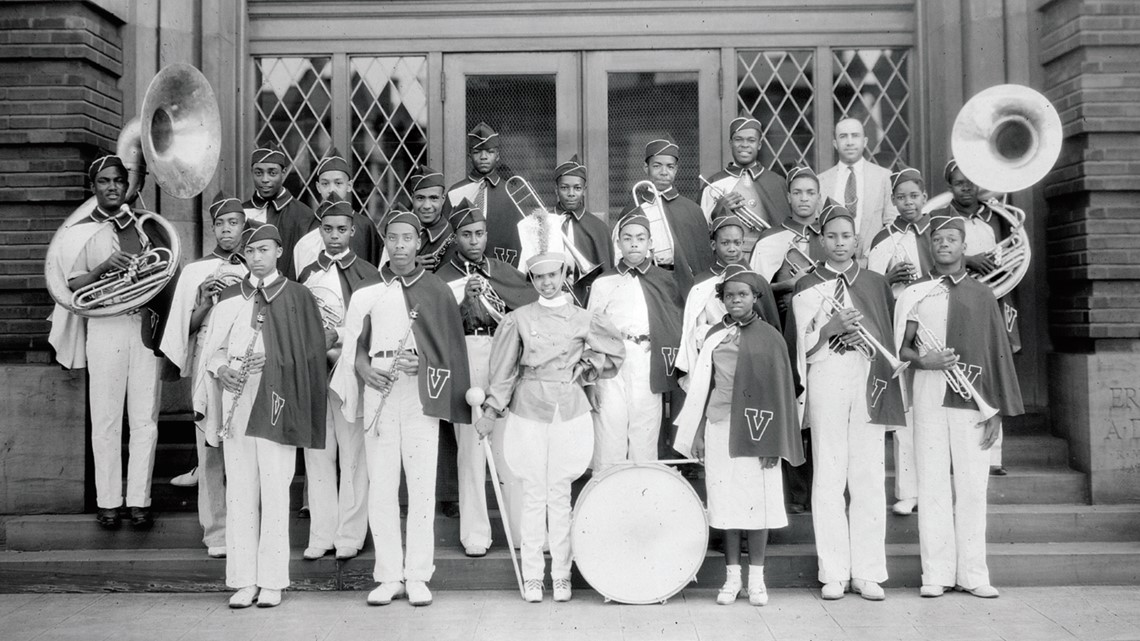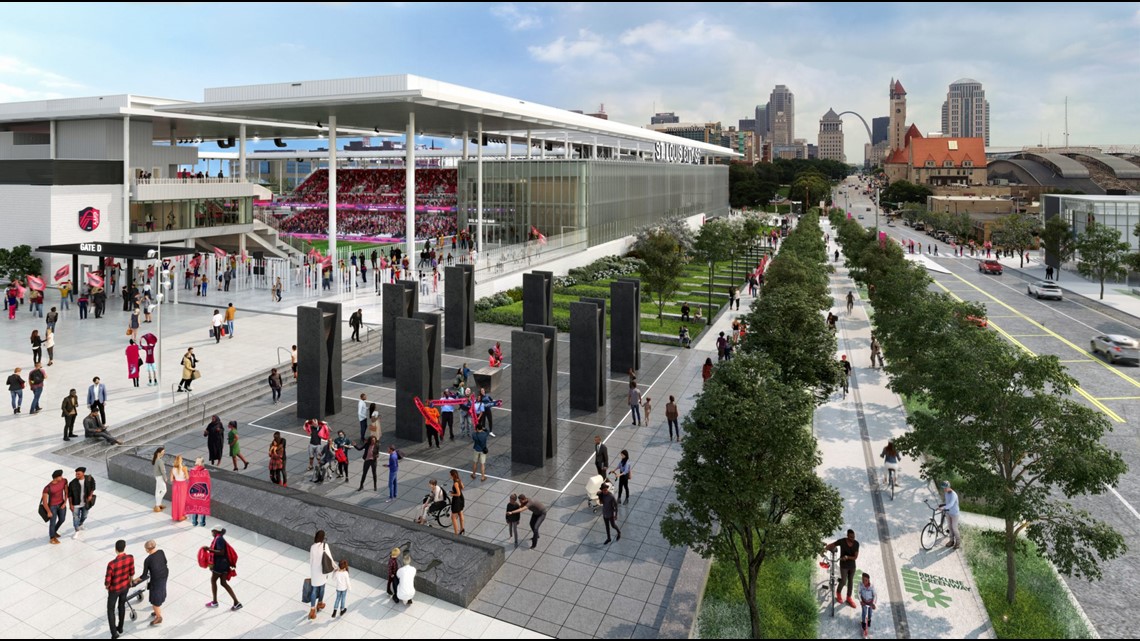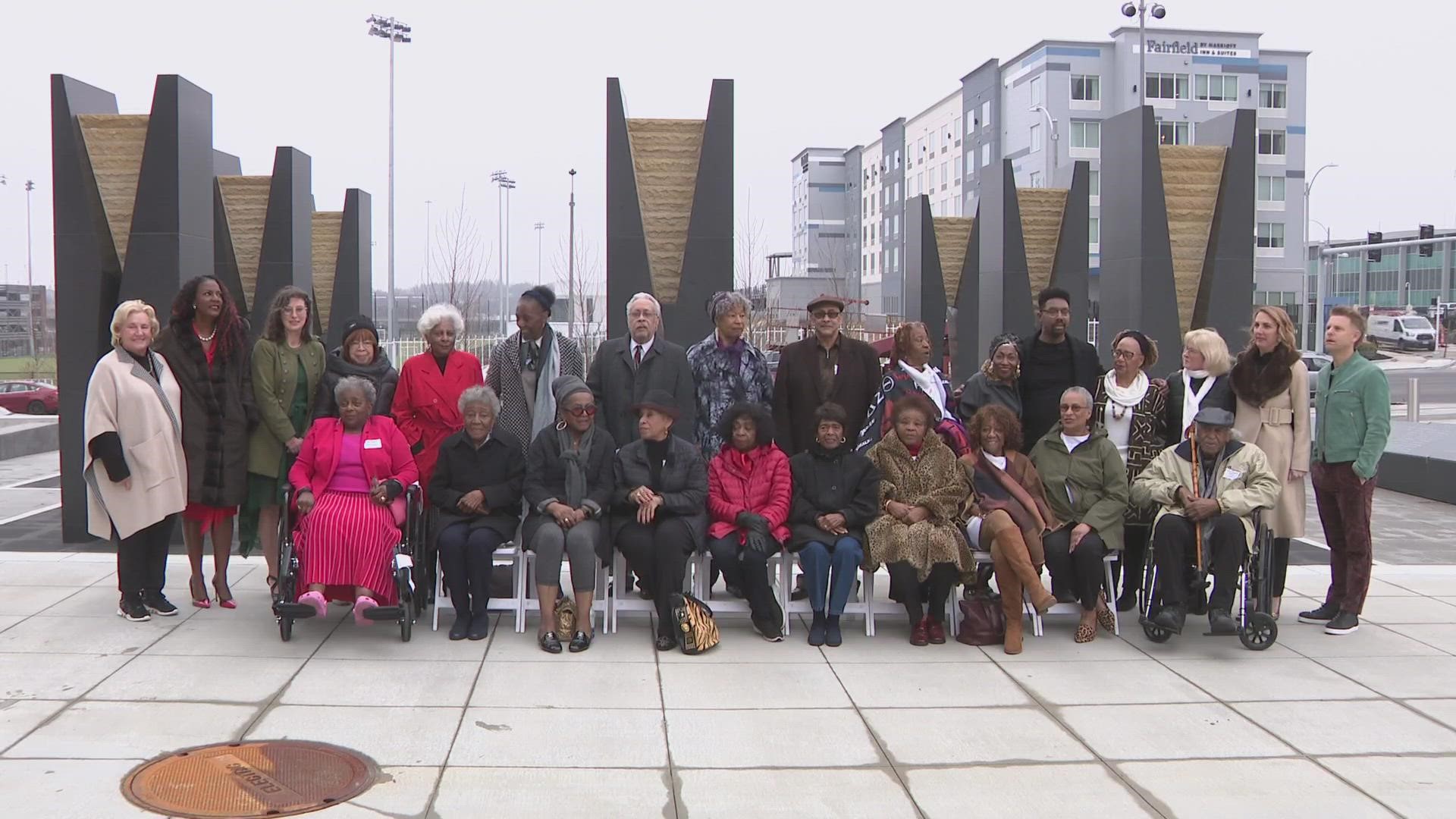ST. LOUIS — Mill Creek Valley was a neighborhood with a rich history. It sat between what is now Downtown West and Midtown for 200 years.
In 1954, the mayor of St. Louis announced plans to clear the 465-acre predominantly Black neighborhood.
"Market Street area next site for slum clearance, industrial redevelopment is major purpose" blared one St. Louis Post-Dispatch headline.
Early history
In 1765, Mill Creek Valley was a site of a large mill that was installed along a creek. It was first home to German immigrants. In the Great Migration, African American families settled there.
During industrialization, railroads ran through the neighborhood and factories encroached.


It also housed important and historical institutions like Pine Street YMCA; the YWCA, Phillis Wheatley Branch; Peacock Alley; hospitals; churches and the home of Josephine Baker.
City Hospital No. 2 served African-American patients and helped create investment in the Homer G. Phillips Hospital.
The YWCA hosted lectures by W.E.B. Du Bois.
Walt Whitman, Scott Joplin, Miles Davis and Maya Angelou also had connections to the neighborhood.


Demolition
After World War II, St. Louis voters approved $100 million to demolish the neighborhood to attract newer homes and businesses. In February 1959, bulldozers fired up.
Dozens of historic churches were torn down.
U.S. Highway 40 was built, but other dreams of transformation did not materialize.
People that lived there often could not move to the suburbs because of segregation and redlining. Many people had to move to apartments in the city, like Pruitt–Igoe.
Seventy percent of the businesses that were in Mill Creek Valley closed.
The demolition of Mill Creek Valley was considered an urban redevelopment failure, with no regard for the Black people and the culture that once thrived there.
2023
CityPark, the stadium housing the new St. Louis CITY Soccer Club, sits on land that was once part of the Mill Creek Valley neighborhood.
To honor the legacy of the area, CITY SC joined Great Rivers Greenway and the City of St. Louis to commission an art installation called "Pillars of the Valley."
The landmark was created by artist Damon Davis. It is on the Brickline Greenway, a network of paths under construction to link the city's current neighborhoods.


“I’m designing a series of pedestals and portals to represent hourglasses that hold time (represented by soil) still, displayed at the top," said Davis in an October news release. "Just like the soil, we can excavate the stories of these people and put them on literal pedestals for the whole world to see, acknowledge and start a conversation about their stories.”
Pillars of the Valley can be viewed by the public starting Feb. 19.

